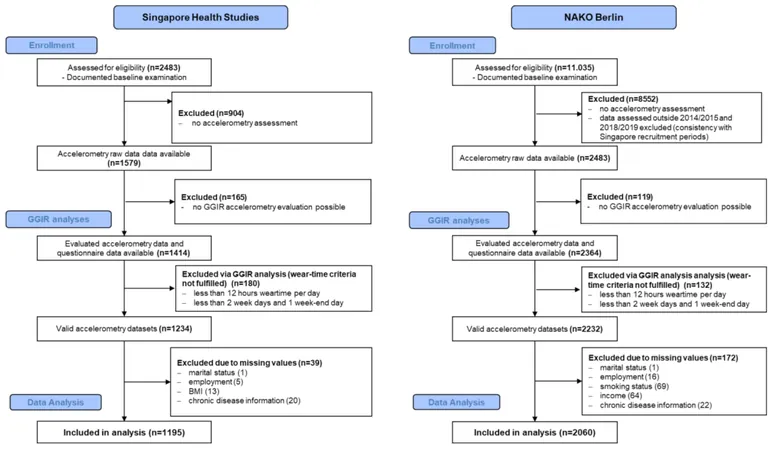
Uncovering Active Lifestyles: A Deep Dive into Singapore vs. Berlin's Physical Activity Patterns
2025-05-21
Author: Arjun
The Vital Role of Physical Activity
Physical activity (PA) is essential for preventing chronic diseases, including cardiovascular issues, type-2 diabetes, and various cancers. While one-third of adults globally fail to meet recommended activity levels set by the World Health Organization, notable disparities exist between nations.
Dramatic Differences: Singapore vs. Germany
In Germany, about 42% of the population falls short of recommended activity levels, contrasting sharply with only 20% in Singapore. This stark difference arises from various factors, including cultural norms, urban planning, and government initiatives.
Government Initiatives and Urban Planning
Germany’s health campaigns often rely on local governments, while Singapore implements nationwide programs aimed at promoting physical activity. Initiatives such as 'Sport Singapore' and the 'Active Health' campaign are complemented by urban planning strategies that enhance accessibility to parks and recreational facilities in Singapore, dubbed the 'City in a Garden.' In contrast, Berlin's historical and decentralized development presents unique challenges to active living.
Exploring the Cultural Factors Influencing Activity Levels
Cultural factors play a crucial role in shaping individual physical activity levels. In Singapore, health promotion is widespread, encouraging participation across various populations, while in Berlin, the organic structure of the city influences behaviors such as commuting and recreational cycle use.
Objective Measurement: The Power of Accelerometers
Recent studies have begun replacing self-reported physical activity data with accelerometer measurements, which provide a more accurate depiction of PA levels. This technological advance has shown discrepancies in reported activity levels—a concern for many previous surveys.
Study Populations: Singapore vs. Berlin
The study spanned two diverse cohorts: participants from the Singapore Population Health Studies and the German National Cohort in Berlin. The Singapore sample had a higher percentage of younger individuals and fewer retirees compared to Berlin.
Diving Into the Data: Assessing Physical Activity and Inactivity
Participants in Singapore engaged in significantly more moderate-to-vigorous physical activity (MVPA) compared to their Berlin counterparts. They also demonstrated lower inactivity levels, highlighting a marked contrast in lifestyle habits between the two urban populations.
Impact of Sociodemographic Factors
Sociodemographic characteristics such as age, employment status, and marital status were shown to correlate with activity levels. For instance, higher body weight and unemployment were linked to lower activity in both cities.
Key Findings: Discoveries from Comparative Analysis
This comprehensive analysis revealed that socio-cultural, governmental, and environmental contexts significantly influence physical activity patterns. The findings suggest that despite Singapore and Berlin’s urbanization, discrepancies in active living persist due to these broader contextual factors.
Understanding the Implications for Public Health
By recognizing these dynamics, public health strategies can be tailored more effectively to address specific cultural and environmental contexts, promoting healthier lifestyles across diverse urban settings.
Looking Ahead: What Future Research Holds
As follow-up data becomes available, this research lays the groundwork for future studies that aim to deepen our understanding of physical activity’s role within public health frameworks, potentially paving the way for better health outcomes worldwide.
In Summary: A Call for Action
As cities like Singapore and Berlin learn from one another's experiences and challenges, there is an invaluable opportunity to create urban environments that support active living for all. Fostering such lifestyles could ultimately reduce chronic disease prevalence and enhance overall community health.


 Brasil (PT)
Brasil (PT)
 Canada (EN)
Canada (EN)
 Chile (ES)
Chile (ES)
 Česko (CS)
Česko (CS)
 대한민국 (KO)
대한민국 (KO)
 España (ES)
España (ES)
 France (FR)
France (FR)
 Hong Kong (EN)
Hong Kong (EN)
 Italia (IT)
Italia (IT)
 日本 (JA)
日本 (JA)
 Magyarország (HU)
Magyarország (HU)
 Norge (NO)
Norge (NO)
 Polska (PL)
Polska (PL)
 Schweiz (DE)
Schweiz (DE)
 Singapore (EN)
Singapore (EN)
 Sverige (SV)
Sverige (SV)
 Suomi (FI)
Suomi (FI)
 Türkiye (TR)
Türkiye (TR)
 الإمارات العربية المتحدة (AR)
الإمارات العربية المتحدة (AR)